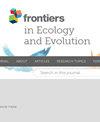The State of Migratory Landbirds in the East Asian Flyway: Distributions, Threats, and Conservation Needs
IF 2.4
3区 环境科学与生态学
Q2 ECOLOGY
引用次数: 34
Abstract
With nearly 400 migratory landbird species, the East Asian Flyway is the most diverse of the world’s flyways. This diversity is a consequence of the varied ecological niches provided by biomes ranging from broadleaf forests to arctic tundra and accentuated by complex biogeographic processes. The distribution and migration ecology of East Asian landbirds is still inadequately known, but a recent explosion in the number of studies tracking the migration of raptors, cuckoos, kingfishers and passerines has greatly increased our knowledge about the stopover and wintering ecology of many species, and the migratory routes that link northeast Eurasia and the Asian tropics. Yet the East Asian Flyway also supports the highest number of threatened species among flyways. Strong declines have been detected in buntings (Emberizidae) and other long-distance migrants. While the conservation of migratory landbirds in this region has largely focused on unsustainable hunting, there are other threats, such as habitat loss and increased agro-chemical use driven directly by land cover change and climate-related processes. Important knowledge gaps to be addressed include (1) threats affecting species in different parts of their annual cycle, (2) range-wide population trends, (3) ecological requirements and habitat use during the non-breeding season, and (4) the conservation status of critical wintering sites (including understudied farming landscapes, such as rice fields) and migration bottlenecks along the flyway.东亚迁徙路线中候鸟的状况:分布、威胁和保护需求
东亚飞行路线有近400种候鸟,是世界上最多样化的飞行路线。这种多样性是从阔叶林到北极苔原等生物群落提供的各种生态位的结果,并因复杂的生物地理学过程而加剧。东亚陆生鸟类的分布和迁徙生态尚不清楚,但最近追踪猛禽、杜鹃、翠鸟和雀形目鸟类迁徙的研究数量激增,大大增加了我们对许多物种的中途停留和越冬生态以及连接欧亚大陆东北部和亚洲热带地区的迁徙路线的了解。然而,东亚飞行路线也支持着飞行路线中数量最多的受威胁物种。在斑蝶科(Emberizidae)和其他长途迁徙动物中发现了数量急剧下降的现象。虽然该地区对候鸟的保护主要集中在不可持续的狩猎上,但也存在其他威胁,如土地覆盖变化和气候相关过程直接导致的栖息地丧失和农用化学品使用增加。需要解决的重要知识差距包括:(1)在物种年周期的不同阶段影响物种的威胁,(2)大范围的种群趋势,(3)非繁殖季节的生态要求和栖息地使用,以及(4)关键越冬地(包括研究不足的农业景观,如稻田)的保护状况和飞行路线上的迁徙瓶颈。
本文章由计算机程序翻译,如有差异,请以英文原文为准。
求助全文
约1分钟内获得全文
求助全文
来源期刊

Frontiers in Ecology and Evolution
Environmental Science-Ecology
CiteScore
4.00
自引率
6.70%
发文量
1143
审稿时长
12 weeks
期刊介绍:
Frontiers in Ecology and Evolution publishes rigorously peer-reviewed research across fundamental and applied sciences, to provide ecological and evolutionary insights into our natural and anthropogenic world, and how it should best be managed. Field Chief Editor Mark A. Elgar at the University of Melbourne is supported by an outstanding Editorial Board of international researchers. This multidisciplinary open-access journal is at the forefront of disseminating and communicating scientific knowledge and impactful discoveries to researchers, academics and the public worldwide.
Eminent biologist and theist Theodosius Dobzhansky’s astute observation that “Nothing in biology makes sense except in the light of evolution” has arguably even broader relevance now than when it was first penned in The American Biology Teacher in 1973. One could similarly argue that not much in evolution makes sense without recourse to ecological concepts: understanding diversity — from microbial adaptations to species assemblages — requires insights from both ecological and evolutionary disciplines. Nowadays, technological developments from other fields allow us to address unprecedented ecological and evolutionary questions of astonishing detail, impressive breadth and compelling inference.
The specialty sections of Frontiers in Ecology and Evolution will publish, under a single platform, contemporary, rigorous research, reviews, opinions, and commentaries that cover the spectrum of ecological and evolutionary inquiry, both fundamental and applied. Articles are peer-reviewed according to the Frontiers review guidelines, which evaluate manuscripts on objective editorial criteria. Through this unique, Frontiers platform for open-access publishing and research networking, Frontiers in Ecology and Evolution aims to provide colleagues and the broader community with ecological and evolutionary insights into our natural and anthropogenic world, and how it might best be managed.
 求助内容:
求助内容: 应助结果提醒方式:
应助结果提醒方式:


